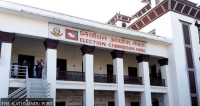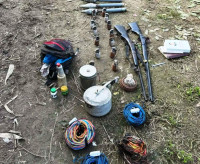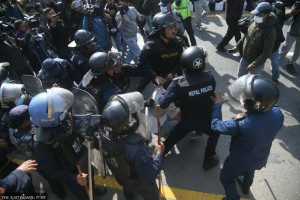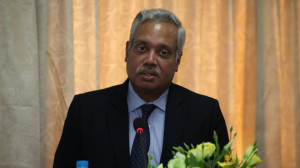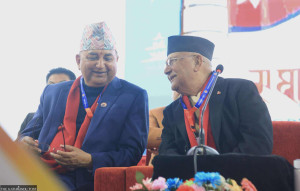National
Government may revoke ban on old vehicles
The government is making preparations to amend the recently-enforced directive banning public vehicles older than 20 years.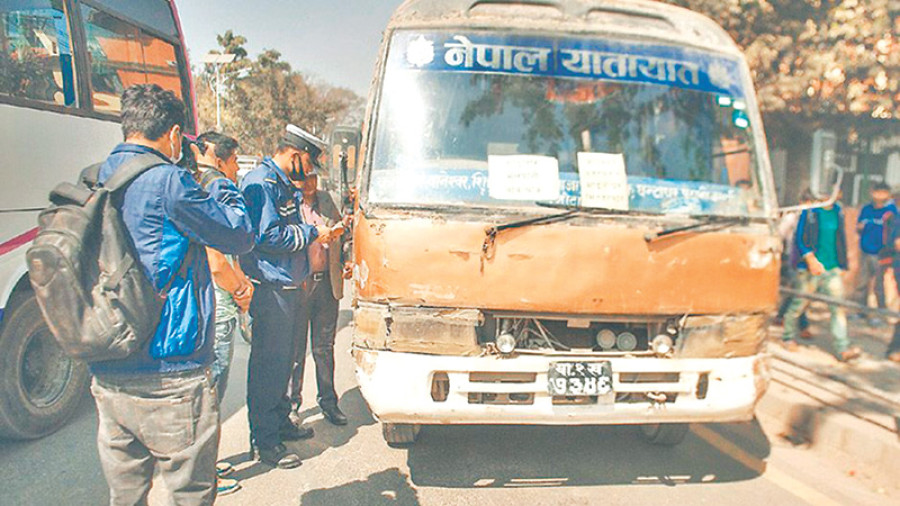
Sanjeev Giri
The government is making preparations to amend the recently-enforced directive banning public vehicles older than 20 years.
The Ministry of Physical Infrastructure and Transport has tabled a proposal at the Cabinet seeking an amendment to the directive putting the public vehicles over 20 years old off the roads. “The proposal has been taken to the Cabinet with a motive to allow vehicles to ply the streets on the basis of its worthiness,” Madhusudan Adhikari, secretary at the Transport Ministry told the Post.
In mid-March, the government had implemented the decision stating that the move will help reduce vehicle congestion, reduce fuel emission from the old and poorly-maintained vehicles that increase the risk of accidents.
A Cabinet meeting on February 2017 had made the decision of banning the public vehicles that are older than 20 years. The decision implemented after homework spanning more than a year, however, is being revoked within six months of its implementation.
According to Adhikari, the move aimed at easing restrictions on old vehicles was initiated following an appeal by transport entrepreneurs. “All the vehicles cannot be put under one category, based only on their age. So, we have initiated a new process that will explore a number of factors,” he said, adding that several old vehicles imported from the European, American and Japanese car makers, among others, reportedly have satisfactory condition.
The transport secretary, however, assures that the government agencies will check the vehicles’ conditions and road-worthiness before allowing such vehicles to ply the country’s roads. The proposal tabled in the Cabinet bars the vehicles older than 20 years from operating in Kathmandu Valley and Pokhara Metropolitan City.
Director General at the Department of Transport Management Lawanya Kumar Dhakal told the Post that the department had written to the ministry about the need to make changes to the directive issued three weeks earlier. “Transport entrepreneurs had filed an application at the department along with necessary recommendations from authorities at the provincial and district levels. We have forwarded it to the ministry with our inputs,” Dhakal said, adding that requests had come mostly from entrepreneurs in eastern hills.
According to Dhakal, particularly Sports Utility Vehicle (SUV) operators in the region have came up with requests arguing that many of the vehicles like Toyota Land Cruiser, Toyota Prado and Jaguar Land Rover and similar other models that they have been operating are fit to take on hilly terrains.However, the decision can be revised only by the Cabinet.
“Authorities at the local levels are requesting us to allow the use of such vehicles to ease movement of people in the hills with difficult terrains,” Dhakal said. The motive behind the requests was to facilitate transportation in the lead up to Dashain, the biggest Hindu festival that witnesses a significant surge in the number of travellers across the country, he added.
Though the government has stated that it will test road-worthiness of the vehicles in question before allowing them back on the roads, the country’s only Vehicle Fitness Test Centre (VTFC)—which is armed with automated facility—in the Capital’s Teku remains defunct. Asked how the road-worthiness of such vehicles could be determined in the absence of automated technology, Secretary Adhikari defended the government move saying that the ministry was also making plans to make the VTFC functional soon.
Dhakal on the other hand said the engineers at the DoTM had prepared guidelines based on which such vehicles would be put to tests and allow those coming up with a clean bill of health back on the roads.
According to the DoTM, around 10,000 such vehicles were in operation across the country before the ban was enforced.




 7.12°C Kathmandu
7.12°C Kathmandu

%20(1).jpg&w=200&height=120)

